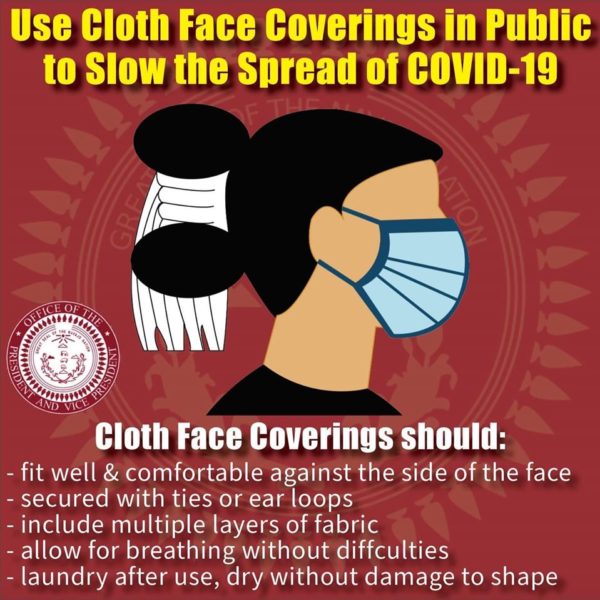
- Details
- By Native News Online Staff
WINDOW ROCK, Ariz. — With the continued spread of COVID-19 on the Navajo Nation, on Friday the Navajo Department of Health issued an order requiring all individuals on the Navajo Nation to wear protective masks in public to help prevent the further spread of COVID-19.
Navajo Nation President Jonathan Nez encourages Navajo citizens to either purchase or make masks to comply with the order.
“Even before the Center for Disease Control and Prevention (CDC) officially recommended using masks in public, we were encouraging our Navajo people to wear masks and gloves and now we’re putting it in writing. Some may not like it, but with the number of positive COVID-19 cases increasing, we have to be proactive in addressing the pandemic,” Nez said in a statement.
“We will continue to consider even more aggressive requirements to help bring the numbers down. Some individuals think we’re using scare tactics or extreme measures, but we are losing lives here on the Navajo Nation and I’m going to do everything I can to help save lives. We are on a mission to flatten the curve,” Nez said.
The Public Health Emergency Order defines a mask as a covering designed to filter one’s breathing through both the nose and mouth. A mask must snugly cover the face around the nose and mouth to prevent the wearer from breathing unfiltered air. For purposes of the order, protective masks be a commercially made face mask, or a homemade cloth face covering.
The Navajo Nation’s 57-hour weekend curfew is currently in effect until Monday, April 20 at 5:00 a.m. (MDT). The Navajo Police Department is enforcing the weekend curfew with road checkpoints. They will also issue citations for curfew violators, which may include up to $1,000 in fines and/or 30 days in jail.
The requirement for wearing a mask in public will remain in effect until otherwise ended by a subsequent Public Health Emergency Order. For more information about protective masks, please visit the Centers for Disease Control and Prevention (CDC) website: https://www.cdc.gov/coronavirus/2019-ncov/prevent-getting-sick/diy-cloth-face-coverings.html.
More Stories Like This
Native News Weekly (August 25, 2024): D.C. BriefsUS Presidents in Their Own Words Concerning American Indians
Two Murdered on Colville Indian Reservation
NDAA passes House; Lumbee Fairness Act Advances
NFL, Vikings to Host Native All-American Game, Youth Flag Clinic
Help us defend tribal sovereignty.
At Native News Online, our mission is rooted in telling the stories that strengthen sovereignty and uplift Indigenous voices — not just at year’s end, but every single day.
Because of your generosity last year, we were able to keep our reporters on the ground in tribal communities, at national gatherings and in the halls of Congress — covering the issues that matter most to Indian Country: sovereignty, culture, education, health and economic opportunity.
That support sustained us through a tough year in 2025. Now, as we look to the year ahead, we need your help right now to ensure warrior journalism remains strong — reporting that defends tribal sovereignty, amplifies Native truth, and holds power accountable.
 The stakes couldn't be higher. Your support keeps Native voices heard, Native stories told and Native sovereignty defended.
The stakes couldn't be higher. Your support keeps Native voices heard, Native stories told and Native sovereignty defended.
Stand with Warrior Journalism today.
Levi Rickert (Potawatomi), Editor & Publisher

